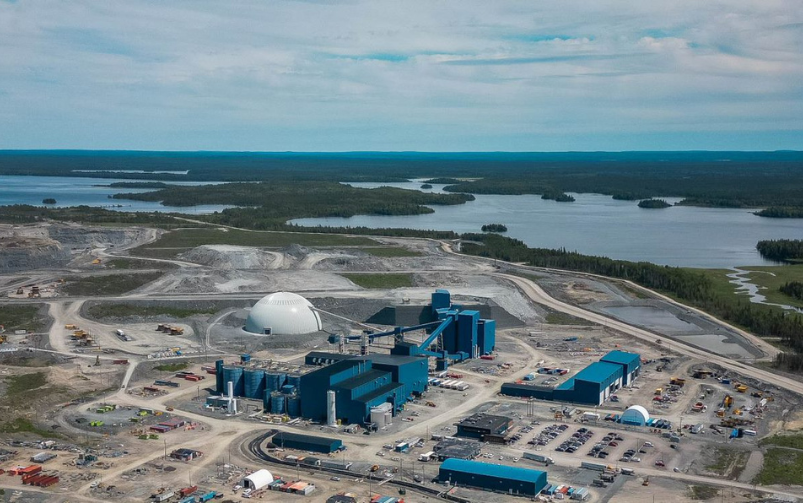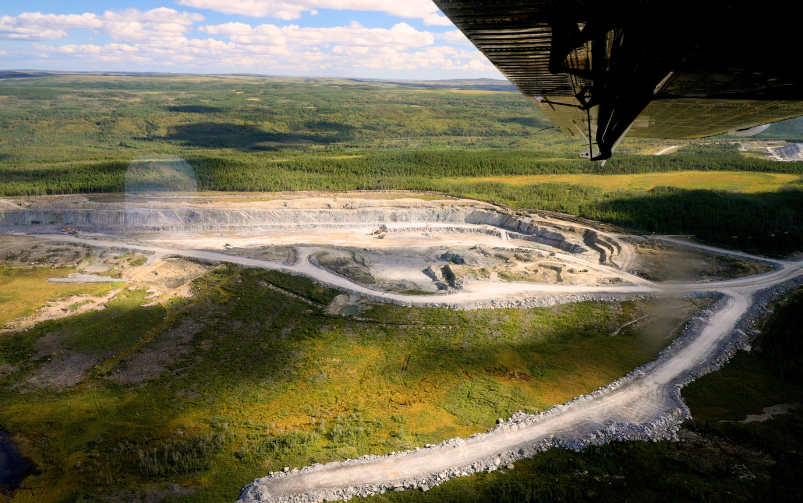The Copperstack and Superstack, familiar fixtures on Sudbury’s horizon, will both be gone by 2030 as the last step in Vale’s Clean Atmospheric Emissions Reduction project. Courtesy of Vale.
At 381 metres, the Vale Base Metals—formerly Inco—Superstack, which is part of the company’s Copper Cliff smelter complex, was Canada’s tallest freestanding structure when it was completed in1972. It later lost that distinction to the CN tower, but today it still stands as the tallest chimney in the Western Hemisphere.
After Vale announced in September that work will begin to bring down the Superstack once it finishes dismantling its smaller Copperstack in 2025, people sent in stories to Vale about family members who were part of the construction for the behemoth structure. Locals who feel attached to it are asking: won’t the horizon of Sudbury, a place known to the global mining industry as Nickel City, feel empty once its iconic Superstack comes down?
“When do you look at a picture of Sudbury that's talking about mining where the Superstack is not included?” said Gord Gilpin, director of Ontario Operations for Vale Base Metals, in an interview with CIM Magazine. “When that symbol that represents Sudbury in history is removed, it does put a little bit of a question mark on, how do people feel about this? So that's one of the things that we're trying to be mindful of. We want to make sure that we're sensitive to that and to communicate and share as much information as we can before and during the demolition.”
The process for dismantling the Copperstack is described on Vale’s website. The flue which fed the Copperstack with emissions was removed in March of this year, so all that is left is the concrete structure. The team is well along the way in establishing the supporting structure that goes up around the stack to facilitate its removal.
A team of six people will work from the top using concrete crunchers, breakers and two demolition robotic excavators to cut up the concrete exterior, pieces of which will fall down the inside of the stack in basketball-sized chunks. Every five to 10 days, debris will be removed from the bottom. Water misting and other methods will be used to minimize dust.
The process for bringing down the Superstack is still being evaluated. “The Superstack, because of its scale will be a similar top-down strategy; however, there will be some differences in terms of how we do that,” Gilpin said.
While it took two years to build the structure, Vale estimated that dismantling it will take about five years and require 40,000 hours of labour with 35 workers employed at the peak of the project.
Since the smelter complex will stay open during dismantling, and because it is located close to Sudbury’s Little Italy neighourhood, the process comes with particular challenges. Simply blasting the structure down is not an option.
“It definitely makes planning very, very important, especially given we're in an [active] operation, and we need to keep it running so we cannot risk having any disruptions to it,” he said.
Vale hired two engineering companies: QM Environmental will dismantle the Copperstock, and ICC Commonwealth, which has experience with large-scale concrete chimney stacks, will take down the Superstack. There are no firm plans on how to use the space once the stacks are gone.
The Superstack was officially decommissioned in 2020. Bringing down the Superstack is the successful last step in Vale’s $1 billion Clean Atmospheric Emissions Reduction (AER) project. By 2018, through upgrades in its smelting process, it had brought down sulfur dioxide (SO2) emissions by 100,000 tonnes per year, which it said is 30 per cent lower than provincial emission limits.
Now, Gilpin said, the stack “is sitting there and in order to maintain a safe operation, a safe community, you either have to maintain it indefinitely, or you need to take it down. When you run the numbers—all the logistics associated with maintaining it—they point to the conclusion that it makes sense to take the stack down.”
While many with a mining connection grew up looking at the Superstack on the horizon, bringing it down is ultimately a sign of progress.
“My personal view on it is that this is a very positive symbol in itself,” said Gilpin, a Sudbury resident whose tenure at the operations dates back before Inco’s takeover by Vale in 2006. “We've been progressively dropping our SO2 emissions over the decades. In fact, today, we actually put out one per cent of the SO2 that was put out in 1972. The removal of the Sudbury Superstack is a very symbolic project that really shows that we've made steady progress. It's an example of the mining industry ultimately being accountable for some of the legacies that have occurred over the last 100 years.”
Vale is inviting people to share a memory or photo of the Superstack on social media or by emailing superstack@vale.com.




